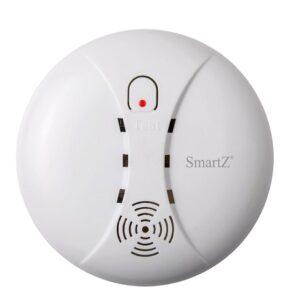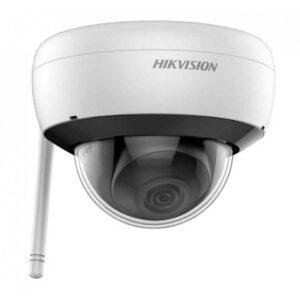Speaking of Japan, it would be a big mistake if you don’t know about Ramen. This is considered a typical drink in the land of cherry blossoms and is loved by many countries around the world. If you do not know the information about this dish, let’s explore with Hu through the Kitchen Tips section!
What is ramen?
Handbook of Ramen?
how to eat ramen?
What is ramen? Ramen is “a noodle dish originating from China”
but it is not clear when it was introduced to Japan. The etymology of “Ramen” is still a subject of controversy. It is hypothesized that ramen is the Japanese pronunciation of the original Chinese word lap mien which means “hand -spun (hand-spun) noodles”. The second theory is that it comes from old vermicelli , and another source says that ramen was originally vermicelli noodles cooked in a starchy sauce. The fourth hypothesis comes from Burma What is ramen?
What country’s ramen?
Japanese or Chinese Ramen What is the history of formation and development of Ramen? The Japanese started eating this type of noodle in 1910, a time when Chinese cuisine caught the attention of many people. Currently, Ramen is the name of a simple dish, consisting of Chinese-style wheat with soy sauce, topped with pork, followed by fish and pickles, and spinach (a type of Chinese cabbage). When Ramen was introduced to Japan, it was initially sold mainly at sidewalk stalls. In 1950, a person returning from China to Japan started making “Sapporo Ramen” in Hokkaido, from which noodle dishes became popular and from Oyster Ramen as everyone knows. By 1980, Ramen became a regular dish for the elderly and children. Ramen has become a world famous dish, widely popular and loved by many people, in each country Ramen is modified to suit the taste of each country. Handbook of Ramen very rich and difficult to explain in a simple way. The author of this article, who has eaten more than 5,000 bowls of noodles, will exchange personal opinions and introduce ramen basics along with answers to frequently asked questions about ramen . How to eat ramen In Japan, when eating noodles such as ramen, udon or soba, people often have the habit of making a slurping sound . There is data that when slurping like that, the noodles will blend with the broth more, making it easier to feel the flavor of the noodles. The point to note here is that when you eat noodles, you will slurp as hard as slurping with the air. Among tourists to Japan, perhaps many will find it unfamiliar, but please try to eat noodles comfortably without having to be embarrassed. In the way of enjoying ramen, there are no other special rules. You can freely eat noodles, broth, topping in the order you like.
How to order ramen
About how to order ramen in Japan, it is usually divided into 2 main types. The first way is to look at the menu board and call the waiter, or another way is to choose ramen at the ticket machine and buy a ticket. What is ramen? Handbook of Ramen
how to eat ramen
Origin of Japanese ramen Although appearing late compared to Udon, Soba or Somen, for Japanese people Ramen is still the national soul noodle dish of this country of the rising sun. According to some documents in 1665, warlord Tokugawa Mitsukuni was the first person to taste Chinese noodles treated by a Confucian. Then in 1884 a shop in Hakodate city advertised the service of “Nanjing Soba” in the Hakodate Times. Nanjing soba was officially introduced in Yokohama in the middle of the Meij era and Ramen was officially served at Rairaiken in Asakusa in 1910.
What is ramen? Handbook of Ramen how to eat ramen

Local ramen in Japan
There are many types of ramen, there are even “ local ramen ” associated with each locality in Japan. Among the local types of ramen, there are many that are closely related to the history and climate of that place, so learning about those types of ramen is also very interesting. In this article, I can’t introduce all types of ramen, so I will give a few basic types typical of localities from Hokkaido to Kyushu, in order from North to South.
Indispensable ingredients for ramen
Pasta Ramen noodles are made from wheat flour, water, salt and ash water, ramen noodles can be straight or twisted, thin or thick. Depending on the type of broth, choose thin or thick noodles to soak up the spices in the broth. Noodles are divided into three types: fresh noodles, dry noodles, and instant noodles. Soup The broth of ramen noodles is a blend of dashi and tare broth, which is stewed from chicken bones, pork bones, shaved fish, kelp, mushrooms for 10 hours and seasonings (tare) like Shio, Shoyu and Tare. Miso There are many types of Ramen noodle soup such as: Shoyu – Japanese Soy Sauce, Shio – Salt, Miso – Soy Sauce, Tonkotsu – Bone and Pork, and Gyokai – Seafood. Pork The meat used in ramen noodles is pork, with 3 main types: Chashu, Kakuni, Bacon . Among them, chashu (pork char siu stewed in soy sauce and mirin) is preferred.
Boiled eggs
Indispensable in ramen noodles is half a hard-boiled egg then marinated with soy sauce, sweet wine and called “Ajitsuke Tamago”. Vegetarian ingredients like tofu, noodles (Seitan), soy sauce (Tempeh), these are all ingredients that we often see in Japanese dishes.
Vegetables served
The most suitable are fresh bamboo shoots, bean sprouts, bok choy, shiitake mushrooms, green onions, dried seaweed, salted ginger, and chives. Other seasonings: Japanese chili powder, sesame seeds, satay, curry powder, salt, pepper, soy sauce (soy sauce). It was unexpected that there were so many types of ramen, each with a different character. Hopefully this article will help you understand more about Japanese ramen noodles as well as the indispensable ingredients to make ramen noodles.
Miso vs tonkotsu ramen: which is better?
It really depends on your taste preferences. Those who prefer a rich, meaty broth may prefer tonkotsu ramen. If you want a meaty explosion that doesn’t get sick, the Hakata-style tonkotsu ramen is highly recommended. Meanwhile, those who like a bit of variety and experimentation will appreciate miso ramen. The original Sapporo-style miso ramen remains one of the best ramen in the world.
Conclude
Ramen has become a world famous dish, widely popular and loved by many people, in each country Ramen is modified to suit the taste of each country.
Link nguồn : https://huinvn.com/ramen-la-gi-cam-nang-ve-ramen-cach-an-ramen.html#
What is ramen? Handbook of Ramen how to eat ramen
What is ramen? Handbook of Ramen how to eat ramen
====================================================================
Some of Subject bellow
How much does AdSense pay for 1 click?
Link nguồn : https://huinvn.com/how-much-does-adsense-pay-for-1-click.html
How to style straight leg jeans
Link nguồn : https://huinvn.com/how-to-style-straight-leg-jeans.html
How to be happy alone
Link nguồn : https://huinvn.com/how-to-be-happy-alone.html
What is smart home?
Link nguồn : https://huinvn.com/what-is-smart-home.html
======================================================================
Below is a list of toppings that are commonly served with ramen:
Chashu
Fatty slices of roasted or braised pork. Chashu is a very common topping, and standard bowls of ramen usually come with one or two slices of it. Most ramen-ya also serve Chashumen (chashu ramen) which is a ramen dish with additional pieces of chashu. Kakuni (braised pork belly) is served instead of chashu at some restaurants.
Menma
Preserved bamboo shoots with a salty flavor
Negi
Chopped or shredded leeks or green onions. Karanegi is a spicy variation of shredded leeks mixed with chili oil. Negi is a ramen standard, while karanegi is often seen with miso ramen.
Moyashi
Raw or cooked bean sprouts add sweetness and crunch. Served on all types of ramen.
Tamago
Hard boiled, soft boiled, raw and marinated eggs are all popular toppings on any type of ramen.
Seaweed
Various types of seaweed such as wakame and nori are commonly added to all types of ramen.
Kamaboko
Slices of steamed fish cake. One type of kamaboko that is commonly served on ramen is naruto (or narutomaki), a sawtooth edged, white fish cake with a red or pink spiral design on it.
Corn
Canned corn is often paired with butter and served on miso or shio ramen.
Butter
A thick pat of butter adds creaminess and depth. Typically added to miso or shio ramen.
Popular ramen types
Ramen are typically categorized according to their soup base, although variations that combine the different bases are not uncommon. The main types of soup are:




Ramen noodles
The second key aspect of ramen are the noodles, which are made of wheat and come in many different types. Typical Ramen noodles are long and elastic, but countless varieties exist that vary from thin and straight to thick and wavy. Some ramen-ya allow you to customize your noodle order to some extent such as by allowing you to select a thickness (thin, regular or thick) or doneness (regular or firm).
=========================================================
Top 12 best ramen shops in Hanoi
1 6. Oshi noodles 03. …
2 3. Ramen Iroha. …
3 0. Saboten. …
4 1. Hokkaido Ramen Oyama. …
5 1. Tokyo Tan Tan. …
6 1. Tonchan Ramen. …
7 3. Hakata Kouryu. …
8 0. Sio Sushi.
===========================================================
(HCM) TOP 10 extremely attractive Japanese noodle shops in Saigon
Kukai Udon. Compared to other luxury Japanese restaurants, Kukai’s price is cheaper but the quality is quite similar, both udon and ramen are delicious. …
Osaka Ramen. …
Osaka – Japanese Rice Bowl. …
Ajisen Ramen. …
Japanese noodle dragon god. …
Marukame Udon. …
Ramen Bar Suzuki. …
Goku Raku.
======================================================
Quick view
1. What is ramen?
2. The main ingredients of ramen noodles
• Pasta
• Water use
• Side dishes
• Vegetables
• Boiled eggs
• Grilled chopped fish
3. Types of ramen noodles
• Shoyu ramen
• Shoyu ramen
• Shoyu ramen
• Tonkotsu ramen
• Tsukemen ramen
• Sapporo ramen
• Hakata ramen
• Kitakata Ramen
• Wakayama Ramen
• Onomichi Ramen
• Hakodate Ramen
• Kurume Ramen
• Kagoshima Ramen
1. What is ramen?
======================================================
Some media are excerpted from https: //www.japan-guide.com/e/e2042.html
What is ramen? Handbook of Ramen how to eat ramen
What is ramen? Handbook of Ramen how to eat ramen
====================================================================
Some of Subject bellow
How much does AdSense pay for 1 click?
Link nguồn : https://huinvn.com/how-much-does-adsense-pay-for-1-click.html
How to style straight leg jeans
Link nguồn : https://huinvn.com/how-to-style-straight-leg-jeans.html
How to be happy alone
Link nguồn : https://huinvn.com/how-to-be-happy-alone.html
What is smart home?
Link nguồn : https://huinvn.com/what-is-smart-home.html
======================================================================

















